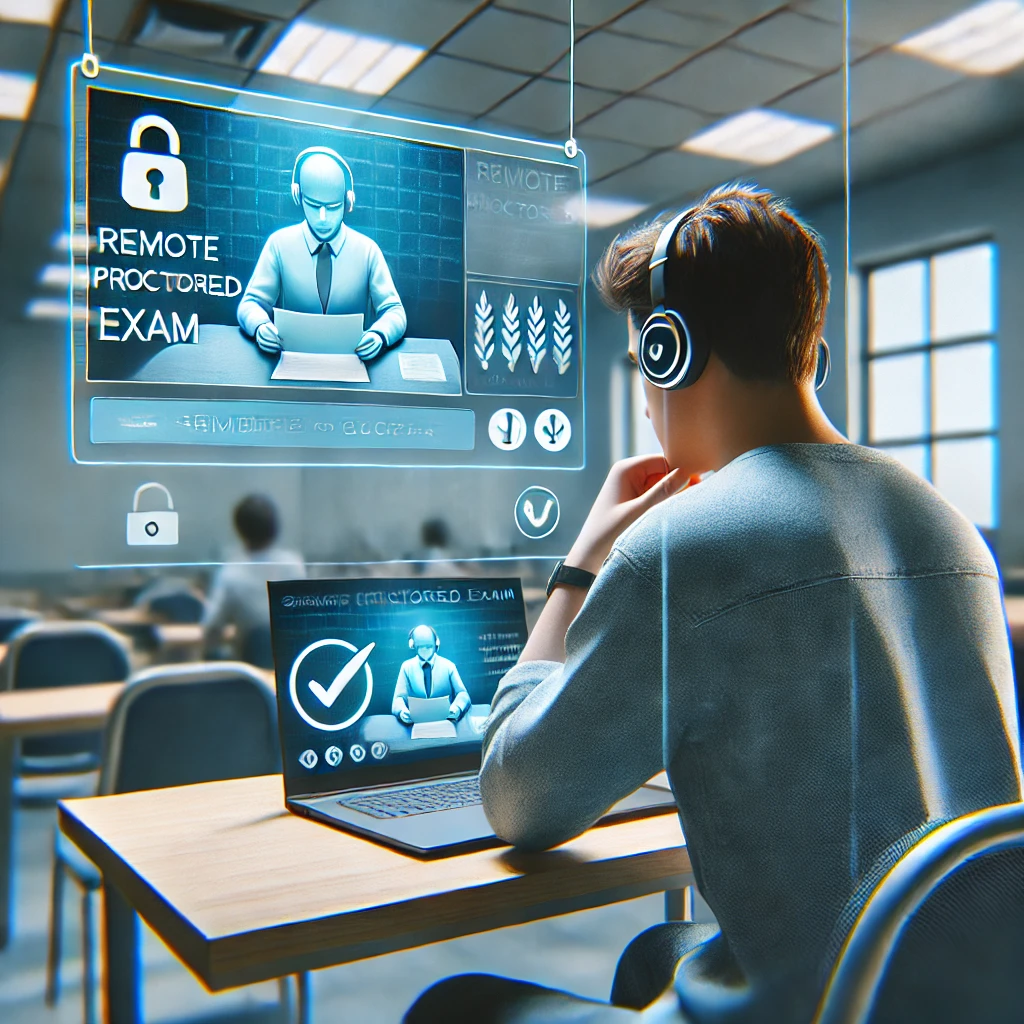Enhancing Security in Remote Proctoring: A Guide for Institutions
Enhancing Security in Remote Proctoring: A Guide for Institutions
As remote proctoring becomes a standard practice for online exams, maintaining security and preventing cheating is a top priority for educational institutions. Here are some key challenges and solutions to ensure the integrity of remotely proctored exams:
Common Security Challenges in Remote Proctoring
- Identity Verification: One of the primary concerns is ensuring that the person taking the exam is the correct student. Without proper verification, there is a risk of impersonation.
- Solution: Implement multi-factor authentication methods, such as ID verification with biometric checks (e.g., facial recognition) to confirm the student’s identity.
- Environmental Control: Students may attempt to manipulate their surroundings to hide unauthorized materials or gain external assistance.
- Solution: Require students to perform a 360-degree room scan before the exam begins. Proctors should monitor the student’s environment throughout the exam to detect any suspicious activities.
- Cheating through Technology: Students might use additional devices, virtual machines, or screen-sharing tools to cheat during the exam.
- Solution: Use secure browser technology that locks down the student’s computer, preventing access to other applications or websites. Monitoring software should be able to detect the use of external devices or unauthorized software.
- Technical Manipulation: Students could tamper with the proctoring software or attempt to disrupt the exam by creating technical issues.
- Solution: Regularly update and test proctoring software to ensure it is resilient against tampering. Provide clear protocols for handling technical disruptions, ensuring that exams can resume smoothly.
- Data Security and Privacy: Handling sensitive student data during remote exams raises concerns about privacy and data protection.
- Solution: Choose proctoring solutions that comply with data protection regulations, ensuring that student data is securely stored and only accessible to authorized personnel.
Best Practices for Secure Remote Proctoring
- Comprehensive Training for Proctors: Ensure that proctors are well-trained to recognize and respond to signs of cheating or technical manipulation.
- Clear Communication with Students: Establish and communicate clear guidelines about what is expected during the exam, including what materials are allowed and how the proctoring process works.
- Regular Security Audits: Conduct regular audits of the proctoring system to identify and address any potential vulnerabilities.
- Enhanced Monitoring Tools: Utilize AI-powered tools that can detect unusual behaviors or patterns during the exam, providing real-time alerts to proctors.
By understanding these challenges and implementing robust security measures, educational institutions can ensure that remote proctored exams are conducted fairly and securely, protecting the integrity of the assessment process.




